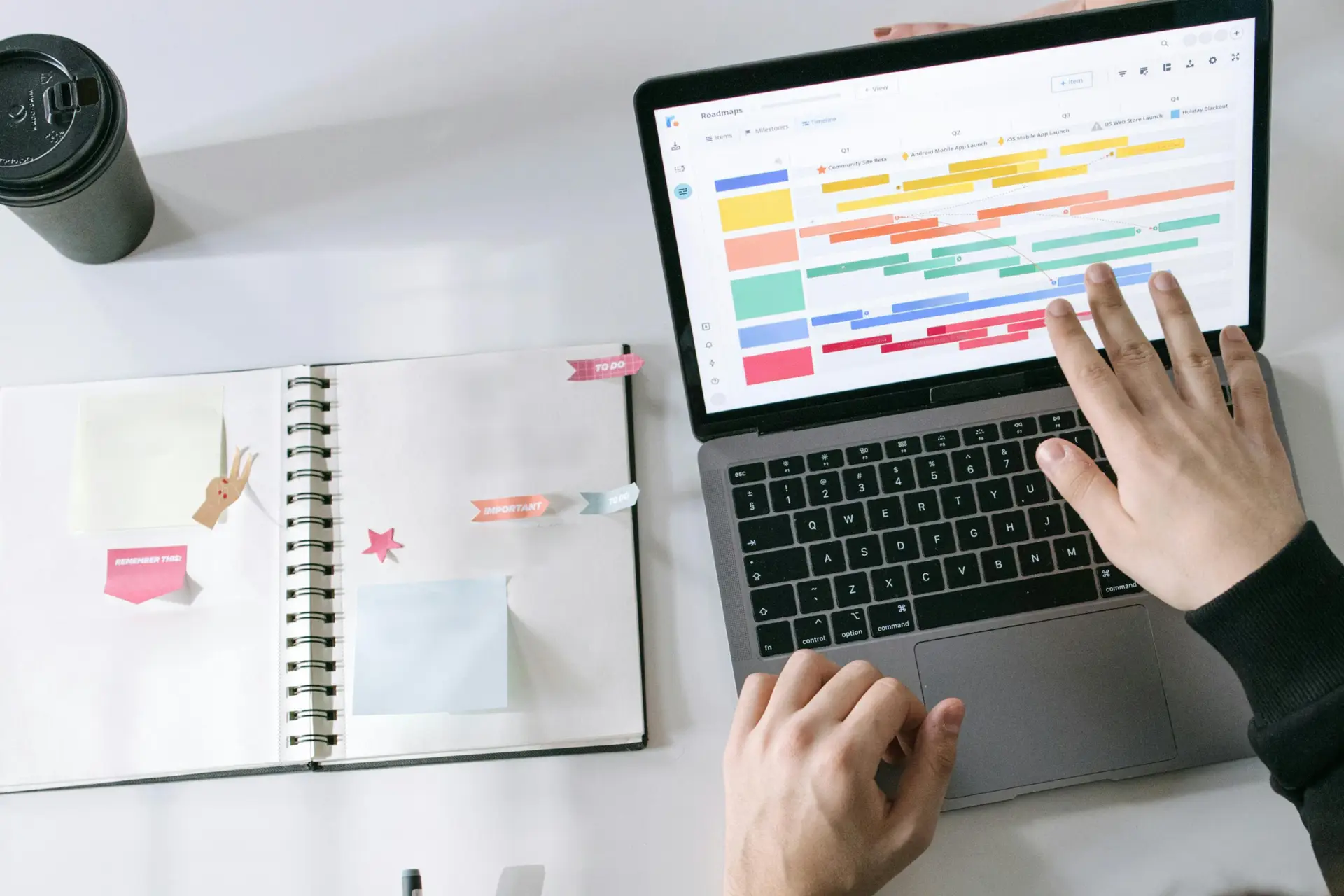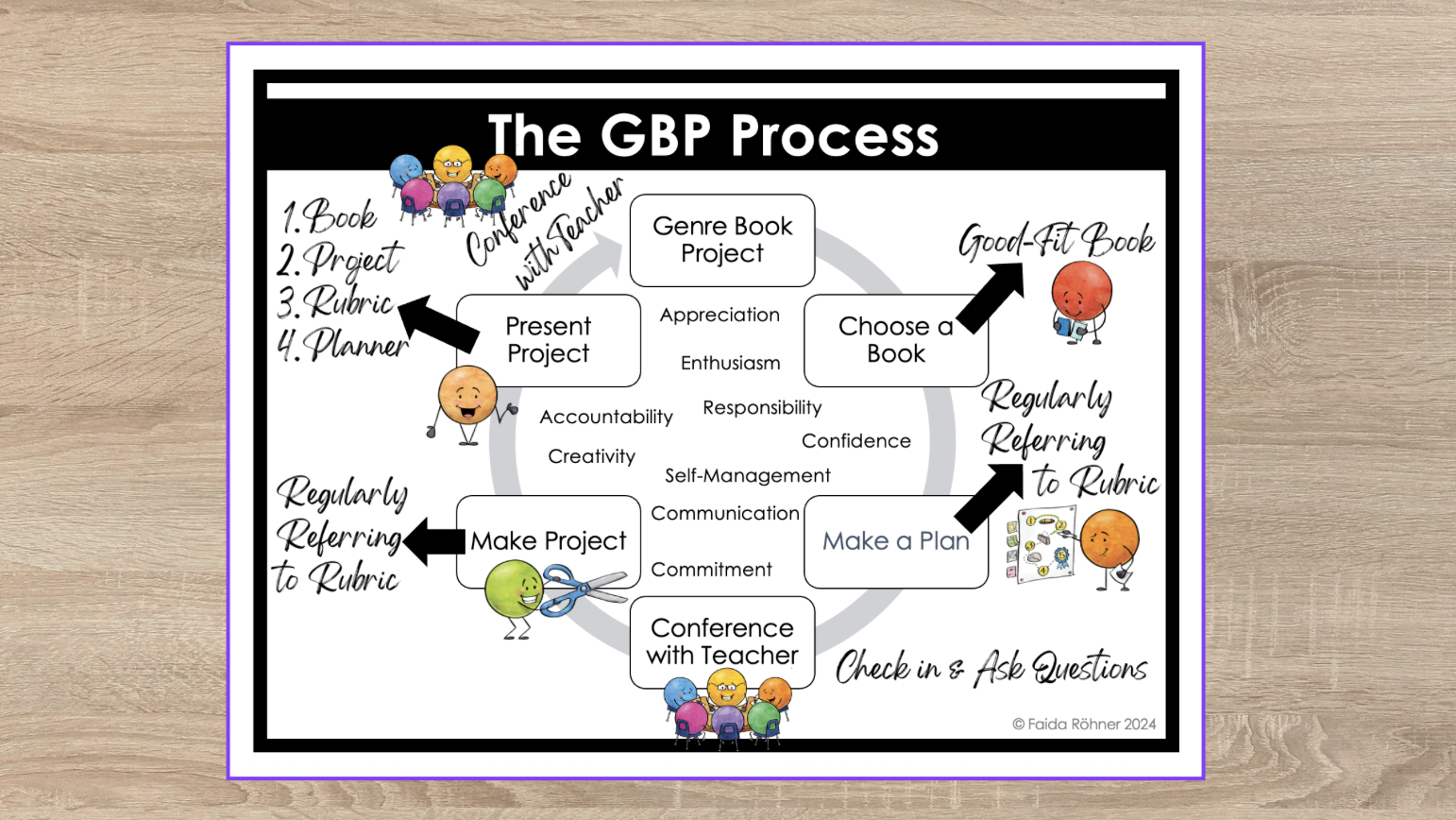Every summer, teachers everywhere sit down with big dreams of perfectly mapped lesson plans for the year. Color-coded calendars. Units that flow seamlessly. Students who will obviously follow along without missing a beat. (Cue the laugh track.) The reality? No matter how much we plan, teaching is messy because kids are real people, not neat little checkboxes.
That’s why, over the years, I’ve shifted my planning mindset. Instead of cramming big skills into single units, I focus on the concepts I want my students to carry with them long after they leave my classroom—and I teach them all year long. Think of it as planting seeds in September and watering them steadily through June.
In my experience, trying to cover “everything” in one unit is like giving kids a buffet plate piled so high it’s spilling everywhere. Sure, they get a taste of everything, but they don’t really digest anything. Instead, breaking concepts into bite-sized chunks across the whole year lesson plans has helped my students develop mastery while keeping me sane.
Throughout my teaching experience, especially having the privilege of partnering with secondary teachers to see what students truly need later on, I’ve narrowed my focus to 4 big areas I teach all year long. Let’s dive into them.
Grammar Lesson Plans for the Year: Small Doses All Year Long
Confession time: I hated grammar as a kid. Whole lessons about dangling modifiers? No thanks. But as a teacher, I know grammar matters. The trick is to weave it into daily routines instead of dumping it into a single, soul-sucking unit.
Here’s How I do it:
- Morning Routine with a Twist – I used to write a short message to students with one specific intentional error littered throughout the message. Students had to spot the mistake on Mondays. For the rest of the week, they corrected this specific mistake in the daily messages
- Advantage: The messages were personal and also allowed me to get any important information out to students. It is free.
- Disadvantage: It was time consuming coming up with the messages each morning.
- Daily Language Reviews – Eventually, I found the Daily EAL Spiral Reviews by Differentiated Teaching with Rebecca Davies. They saved me prep time, and my students actually liked the consistency.
- Advantage: The different grade levels allowed me to differentiate and all the packets are print and go.
- Disadvantage: This product can be pricey depending on your school or personal budget..
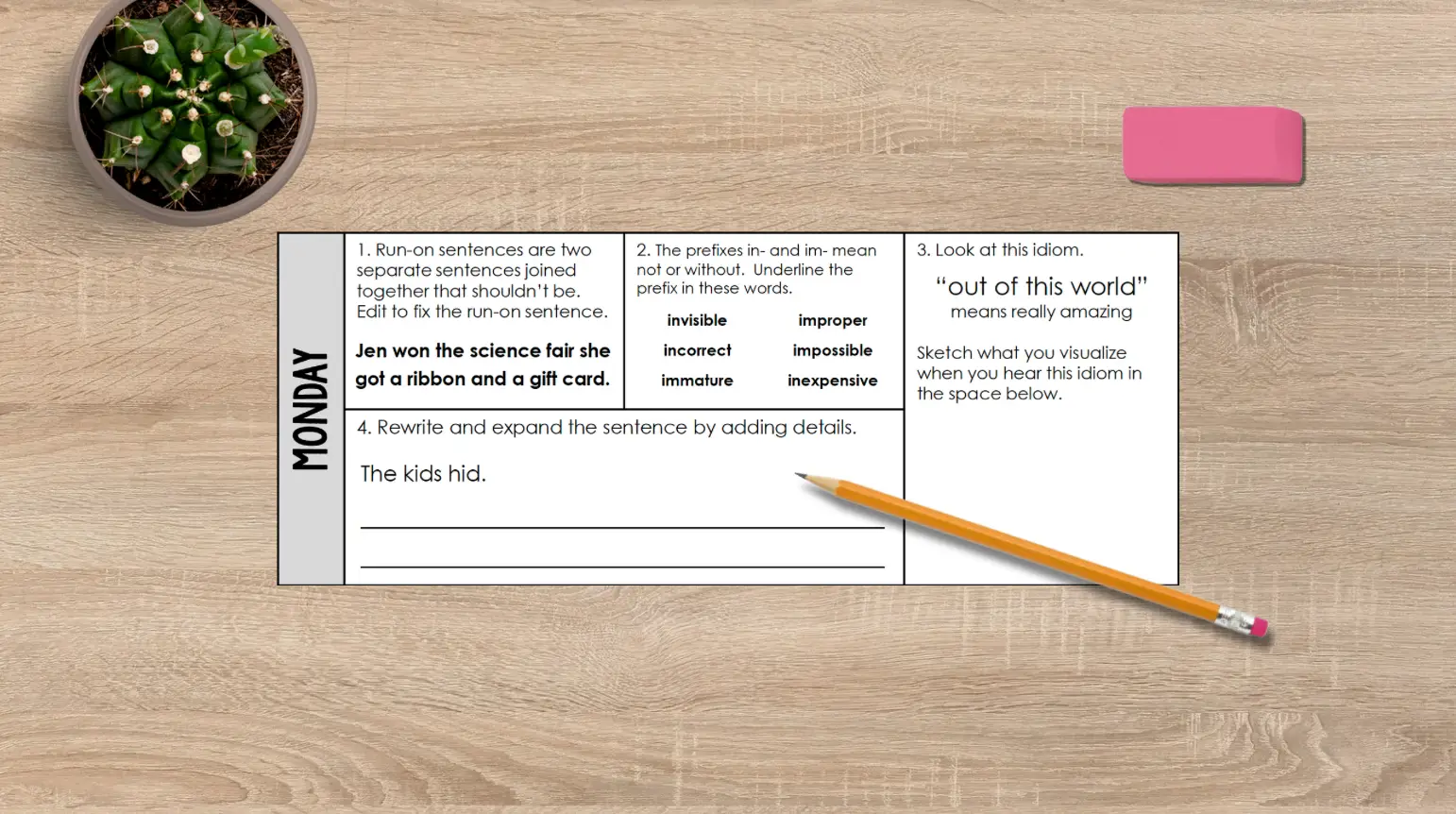
Why it Works All Year Long:
Teaching grammar in five-minute doses every day means kids build muscle memory without the groans. It’s part of our lesson plans for the year from day one, and by June, I see huge improvements in writing and confidence. Plus, the routine saves me planning stress—because real teachers need time for real life too.
Story Problems: Building Problem-Solvers
Story problems are where math meets the real world—and where a lot of kids freeze. They might know how to divide, but wrap it in a word problem and suddenly they look at you like you just asked them to solve world peace.
So instead of saving story problems for “later,” I build them into my whole year lesson plans.
How I Teach Solving Word Problems
- Teach How to Read First – From day one, we practice reading the whole problem, highlighting what the question is actually asking, and ignoring fluff.
- Step-by-Step Strategy – We create a class poster of how to approach a story problem:
- Read.
- Highlight what it’s Asking.
- Reread.
- Highlight important info.
- Solve.
- Creative Solutions – Students brainstorm multiple strategies. Not every one works, but it builds critical thinking.
Why it Works All Year Long
When I teach story problems all year long, students’ confidence skyrockets. Students, who are typically reluctant to do math are no longer intimated by having to read a word problem. And by the end of the year, they don’t just solve the math—they explain how they solved it and why it makes sense. That’s real-world math power.
If you want to read more about how I introduce story problems, I share my first day of school lesson plans here. It also includes how I use this as an informal way to assess students’ thinking skills.
Genre Lesson Plans for the Year: Beyond Fiction and Non-Fiction
When most kids hear the word “genre,” they think: fiction vs. non-fiction. End of story. But we know that literature is so much richer—and if students are going to grow into thoughtful readers (and future IB students in my school’s case), they need time to really explore genres. That’s why genre isn’t a one-and-done unit in my classroom. It’s part of my lesson plans for the year from the very beginning.
Here’s the problem: it’s one thing for students to list characteristics of genres like fantasy or historical fiction. It’s another thing for them to apply that understanding to real books, reflect on their choices, and communicate what they’ve learned. That’s where the Genre Book Projects (GBP) come in.
The GBP Process
The beauty of the Genre Book Projects is their cycle of repetition, reflection, and improvement. Here’s how it works:
- Choice & Ownership – Students select a book from a chosen genre and decide how to present their understanding. Options range from creative projects like puppet shows and songs to more traditional formats like essays and posters.
- Rubrics & Planning Tools – Each project comes with a clear rubric, a planning calendar, and guiding vocabulary. Students use these tools to self-assess, track their progress, and set deadlines.
- Midpoint Check-In – Halfway through, students submit a plan that includes their chosen genre, a project outline, and a timeline. This step builds accountability and time-management skills.
- Reflection & Presentation – After finishing, students self-evaluate using the rubric and present their projects to peers (and sometimes parents). Repeating this process 6–8 times across the year means every round gets stronger.
Why It Works All Year Long
The GBP isn’t just about “covering genres.” It’s about giving students multiple chances to practice independent inquiry, creative expression, and public speaking—all while genuinely engaging with literature. Instead of memorizing definitions, they can spot the nuances of a genre in a real book. Instead of dreading a book report, they look forward to showing off their ideas in creative ways.
By teaching genre all year long through the GBP, I’ve watched students grow not just as readers but as thinkers and presenters. They learn to handle long-term projects, reflect on their progress, and celebrate their growth. And as a bonus? Parents actually get excited about our project fairs—it’s become a highlight of the school year!
Beyond Book Reports Genre Book Projects: Creative Reading Activities + Rubrics
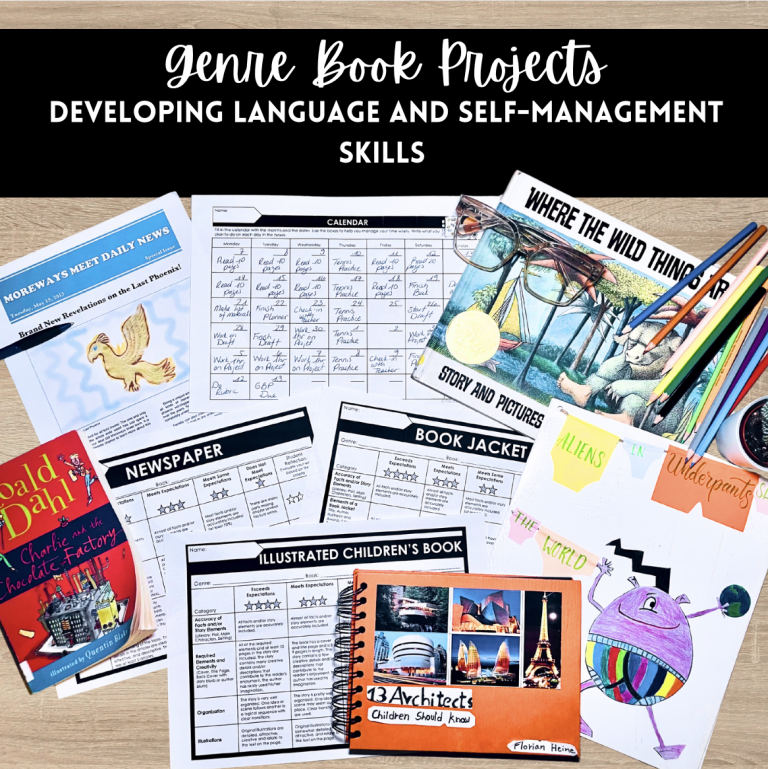
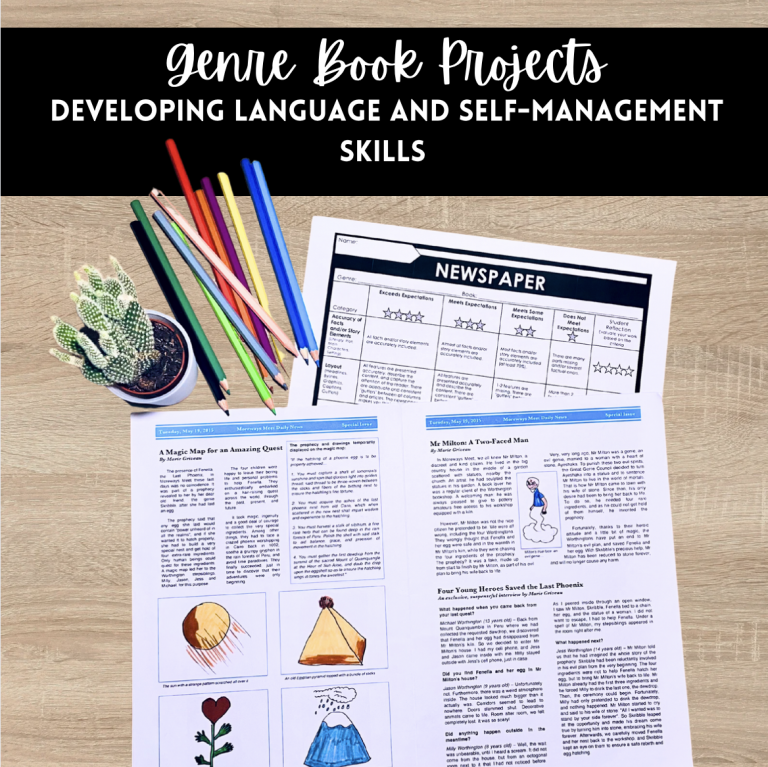
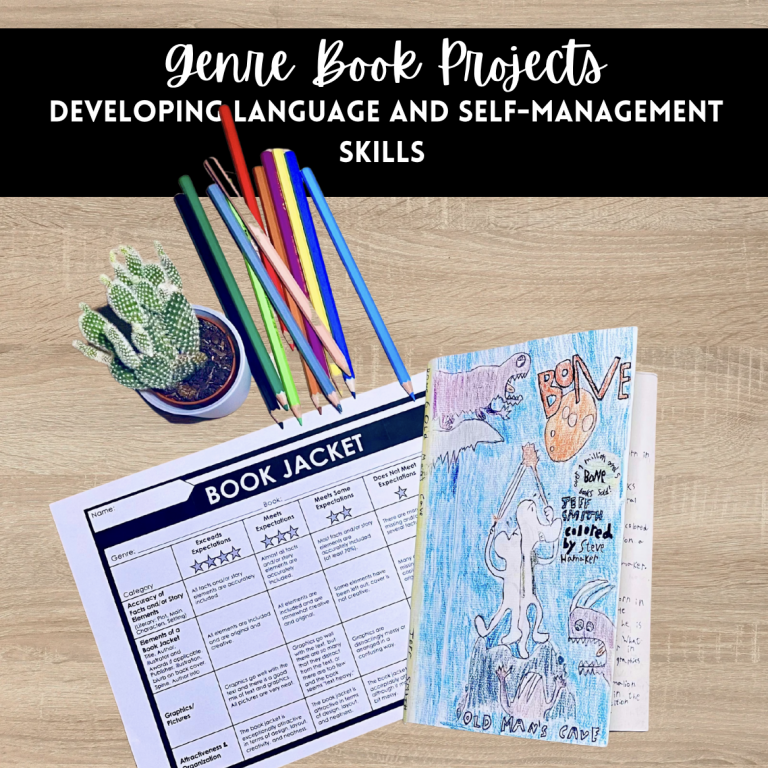
If you’d like to bring this into your own classroom without reinventing the wheel, I’ve put everything together for you in my resource: Beyond Book Reports Genre Book Projects: Creative Reading Activities + Rubrics. It’s flexible, easy to implement, and saves you the planning headache while giving students a meaningful, real-world learning experience.
Mapping Lesson Plans for the Year: Anchoring Big Ideas
Maps aren’t just for geography—they’re for making sense of the world. From history to science to economics, mapping connects students to real people and places. That’s why mapping lives in my whole year lesson plans.
How I Weave Mapping in with Unit Connections
Each of my units connect to mapping. For example:
- Past Civilizations: hemispheres, countries and territories
- Market Forces: Road maps and scale.
- Our Finite Planet: Political and physical maps
- Space: Topographic maps
Why it Works All Year Long
By teaching mapping skills all year long, students don’t just memorize terms—they apply them in meaningful ways. They learn to see the world more clearly and make connections across subjects. It’s a powerful tool for helping them understand that the “real world” is interconnected.
Bonus Tip: The Skills Binder
One of the best things I’ve added to my classroom is a Skills Binder. Anytime we model or practice a new skill—like using a scale on a map or identifying longitude and latitude—students add a reference page to their binder. It’s organized with a table of contents and becomes their personalized “textbook” of skills for the year.
The benefits? Students always have something to refer back to, which builds independence and reduces the “I forgot how to do this!” moments. It also gives them a sense of pride as they see their binder grow. And when they move on to secondary school, the binder serves as a practical resource they can carry forward.
If you’re interested in setting up a skills binder, below you will find a free version of my skills binder organizer with the tables of contents with subject areas. It’s one of those small shifts that makes a big difference all year long.
Skills Binder Organizer with Subjects
Rethinking your Lesson Plans for the Year
If you’re rethinking your lesson plans for the year, start by asking: What’s too big for a single unit? Which skills deserve steady practice? For me, grammar, story problems, genre, and mapping are the “always-on” threads that hold my teaching together.
The benefits? Students build confidence through repetition, I save time by using routines and resources, and together we keep learning connected to the real world. Because at the end of the day, that’s what matters—real teachers, teaching real students for the real world.
If you are interested in reading more about implementing routines, strategies and procedures that save time, read this article here.

